2019+ ANIMAL CHAMPIONS by the Czech Mint
A very nice series from the Czech Mint, Animal Champions has for its subject the record breaking creatures that push the envelopes of just what is possible in the natural world. The biggest, fastest, strongest of their types are represented, and done so in a striking style. Each coin is antique-finished and is struck in an ounce of fine silver. They’re quite a standard format, eschewing colour, high-relief and inserts,and as a result are relatively affordable.
The first year of release was 2019 and encompassed four issues, each of which was presented in a gatefold card blisterpack rather than a traditional box. The obvious advantage of this is the large amount of space opened up for images and information, which the mint has taken full advantage of. Each blistercard has a world map showing the habitat range of the subject, as well as multiple images and plenty of background description to what makes each creature special. A card sleeve was availble to purchase which holds all four blistercards from 2019.
To date, 2020 is following an identical path. Two issues aare out now, with two more to follow. The same spec, presentation and options are all in evidence and they appear equally well done. The same relatively small mintage of just 800 pieces per design remains, pretty low given the spec. All told, this series is a good one, reasonably priced and with a tight mintage.
The first silver coin adorned with patina was dedicated to the cheetah which is the fastest terrestrial creature in the world.
The record speed serves the cats when hunting small ungulates, such as gazels. The cheetah can run at a speed of up to 120 kilometers per hour, but only for a short distance – approximately 200 meters. If it does not reach the prey within 20 seconds, it usually gives the hunt up. However, this does not happen too often. Cheetah belongs to one of the most perfect predators among the lonely hunters, because almost 70% of its hunting trials end successfully. The elastic structure of the cheetah body is perfectly adapted to the fast running. The cheetah jumps up to 7 meters long at the maximum speed. Still, it does not rely too much on its record-breaking performance. When hunting it runs 55 kilometers per hour. It is much more important for the cheetahs to flexibly change the acceleration, which ensures them incredible agility.
The reverse side of the coin made by medal maker Petr Patka, DiS presents a cheetah face surrounded by the Latin name ACINONYX JUBATUS. Individual details are outstanding thanks to a decent patina. The coin is stored in a spectacular packaging that contains photographs and the czech-english text, which further describes the cheetah’s record-breaking feature.
The second silver coin adorned by a patina from the cycle of the Czech Mint The animal record holders was dedicated to the golden poison frog. This frog is the most poisonous creature of the planet.
The golden poison frog occurs in three different color variations – green, yellow and orange – and this alert color warns anyone who tries to irritate or eat it. Even though golden poison frogs are smart and intelligent hunters, they do not use their poison to attack. Batrachotoxin – a rare alkaloid poison that permanently prevents nerves from impulses and leaves muscles in a shrunk condition – is contained in their skin and protects them from predators. The golden poison frogs exclude it only under pressure, in self-defense, and thus have no natural enemy. A small frog has only one milligram of lethal substance. But it is enough to kill ten thousand mice, twenty people or two African elephants. This is used by native Colombians from Chocó tribe, who collect their poisons and apply them to the spikes of arrows. The golden poison frog itself does not produce poison. It synthesizes it from food which is probably a beetle of the Acrochordidae. Frogs kept in captivity that eat crickets or flies, are toxic, but it may take years to accumulate poison.
The coin was made by the medal maker David Kružliak. The reverse side presents a detail of the frog head surrounded by the Latin name PHYLLOBATES TERRIBILIS. The individual details of the relief excel due to the decent patina. The spectacular packaging is an integral part of the coin. It contains photographs and a Czech-English text, which describes the deadly character of the golden poison frog.
A peregrine falcon on the third silver coin beautified with a patina. This bird of prey is the fastest animal in the world.
With the use of a circular rising in thermals, the falcon reaches high heights, from where it observes the action below. As soon as it sees the prey in the air, it folds its wings and goes into a dive that is characterized by a steep angle, a straight path, and high speed. Thanks to the aerodynamic shape of the predatory body, this speed exceeds 300 kilometers per hour. During the fall, the falcon increases its speed even further by rotating and uses only slight changes in wing position to maneuver. Once it reaches its prey, it stuns it with a violent blast and grabs it with the claws. If the prey survives, the falcon kills it with beak after falling to the ground. The predator would not survive a collision at such a speed if it hit the body of the prey directly. Therefore, it is primarily aimed at the wings. If the prey sits on the ground, the falcon tries to force it to take off. In addition to dive hunting, the falcon is able to attack even during normal flight – but it does not reach its extreme speed.
Medal maker David Kružliak dedicated the reverse side of the coin to the detail of the falcon head supplemented by the Latin name of the predator FALCO PEREGRINUS in the copy. The surface of each coin is embellished with a patina which emphasizes the details of the relief. The coin is stored in an spectacular packaging. You will find there photographs together with the Czech-English text that represents peregrine falcon´s performance.
The Czech Mint dedicated the fourth and final silver coin from the cycle Animal Record Holders to dragonflies. These winged arthropods that occur in countless variations around the world, are the fastest flying insects.
Dragonflies use this record feature when hunting. The mosquito flips its wings five hundred times a second, the dragonfly only thirty times. Despite this surprisingly low frequency, dragonflies reach speeds over 50 kilometers per hour when flying. They can swiftly change direction, fly backwards, sideways, up and down, and float like a helicopter. Exceptional agility allows dragonflies to hunt and consume some species of prey in flight. Big eyes consisting of thousands of tiny eyes and a specialized nervous system that allows to track the pursued target unmistakably also help when hunting. Some dragonflies have yet another record performance in flight. When migrating, they use the winds that seasonally bath in many parts of the world and let them drift thousands of kilometers away. This is how they can overcome the entire ocean …
Medal maker Petr Patka, DiS., depicted a sophisticated detail of a dragonfly head on the reverse side of the coin, accompanied by an inscription ODONATA – ie the Latin name of this insect order. The surface of the coin is embellished with patina, which also underlines the finest details. A spectacular packaging is an integral part of the coin. It contains photographs, together with Czech-English text that describes the record-breaking features of the dragonfly.
The Czech Mint embellished the fifth silver coin from Animal Champions series with a patina and dedicated it to the African elephants. They are the largest terrestrial creatures in the world. They grow up to 4 meters in height, 9 meters in length and 7 tons in weight.
Although African elephants must always touch the ground with three limbs due to their weight, they are not clumsy – they move as fast as a human, swim very well and run at speeds of up to 40 kilometers per hour. Thanks to their record size, they have no natural enemy. Reproduction of these giants is also record-breaking. The elephants have the longest pregnancy in contrast to other mammals. The baby elephant, born after 22 months, weighs 110 kilograms and, unlike its parents, can become a prey to lions, crocodiles and hyenas. The teeth mostly become the cause of death of adult elephants that do not have to face African predators. Old elephants often starve after losing their only four molars that they use to chew the food up. Or they become the prey of a human who longs for their tusks – two lenghtened teeth that serve as a tool and a weapon. The foolish human desire for ivory has inflicted the threat of extinction.
The reverse side of the coin was processed by the medal maker Petr Patka, DiS. It presents a front view of an elephant’s head with record-large ears that serve for thermoregulation and can capture infrasounds, and a record-long trunk consisting of forty thousand muscles. The whole human body has only six hundred). The composition is supplemented with the latin name of the mammal LOXODONTA AFRICANA. The coin is stored in a spectacular packaging in the form of a pop-up book. It contains photographs and a czech-english text describing the record characteristics of African elephants.
The Czech Mint dedicated the first silver coin from the second edition of the series “Animal Champions” to Rhinoceros beetles (AAN NOTE: This is an error. This is the second coin of the second series). These beetles, which occur in many variations around the world, are proportionally the strongest animals in the world.
While Rhinoceros larvas develop for up to seven years, adult individuals live just for around two years, with their only goal to produce offspring. Not only their unprecedented strength, but also the special gear that has given this insect subfamily a name, help males to fight rivalries in love. Rhinoceros beetles grow up to 15 centimeters in length and despite their size they can fly. They are protected not only by their respectable dimensions, but also by a solid chitin exoskeleton. Unlike vertebrates, they have muscles inside this outer skeleton and thus have much more room to attach. As a result, Rhinoceros beetles can carry up to 850 times their own weight. You would have to lift 65 tons that corresponds to a battle tank to equal them… And what does a beetle fight for a female favor look like? The two males snap their horns together and start crushing. The winner, who remains firmly in place, lifts the loser up and throws him off the tree or makes him retreat. Beetle match, in which two rhinoceros beetles are placed on a hollow branch in which the female is hidden, is a popular gambling game with considerable bets in Asia.
Medal maker Petr Patka, DiS., chose the European rhinoceros beetle that can be found in Czech nature. He depicted it climbing a branch on the reverse side, and added an inscription DYNASTINAE – the Latin name of the insect subfamily of Rhinoceros beetles. The surface of the coin is adorned with a patina, which enables the finest details of an armored beetle body to excel. The coin is set in a spectacular packaging. It contains photographs and Czech-English text describing the record-breaking quality of Rhinoceros beetle.
The Czech Mint dedicated the seventh silver coin embellished with a patina from the cycle of Animal Champions to sloths which are the slowest mammals in the world. This record-breaking feature makes them almost invisible and protects them from predators.
The reputation of the sloths is not very flattering, but despite their name, they are not lazy at all – they are just careful. Birds of prey, which focus on their prey in the moment it begins to move, do not notice the slow creature merging with the forest at all. Sloths usually move at a speed of 0.2 km / h. It spends most of its life in the dense canopy of the tall trees in the South American rainforest, where it hangs head and back down. They hook the branch with long strong claws and sleep in the same position for 10 to 20 hours a day. Not only the movement of the sloths is slow, but also their digestion. They digest food up to fifty days, so they get all the necessary nutrients. They move their bowels once a week or a month.
The reverse side of the coin was processed by the medal maker David Kružliak. It presents a view of a sloth hanging on a branch, which does not lack the characteristic “smile” on its face. The composition of the reverse side is supplemented with the Latin name of the mammalian suborder FOLIVORA. The composition of the obverse side, which is common to the whole cycle, presents a pair of natural scenery and attributes of the island of Niue, which provides the Czech Mint with a foreign license to issue its own commemorative coins. These are the profile and the name of Queen Elizabeth II, the nominal value of 1 DOLLAR (NZD) and the year of the issue 2020.
Sharks have ruled the oceans and seas for more than 300 million years, which means they appeared 100 million years before dinosaurs. They adapted perfectly to their environment in the earliest times, therefore, their appearance did not have to evolve further. The perfect combination of senses gives them the upper hand over all other marine animals. While one perceives the environment through the five senses, sharks have eight – sight, hearing, touch, taste, smell, sideline, sensory cavities and so-called Lorenzini ampoules. Rumors of a shark’s sense of smell tend to be exaggerated, but even so, these fish can catch the smell of a single drop of blood over a mile and a half. However, the real shark miracle is Lorenzini’s ampoules which record even slight changes in the electric field. This is created by all animals, and the shark is able to find its prey, even if it is hidden in the sand or in the dark.
The reverse side of the coin from the workshop of medal maker David Kružliak presents a shark with a dorsal fin cutting through the surface and bared teeth. It is not without interest that the front row of worn and missing shark teeth is gradually being replaced by other rows with new sharp teeth, while there can be up to fifteen of them in a row and the shark will change tens of thousands of teeth in its lifetime. The composition of the reverse side is supplemented with the silhouette of another fish floating in the depths, together with the Latin name of the superorder of sharks SELACHIMORPHA. The obverse side, which is common to the entire animal cycle, presents a pair of natural scenery and the necessary elements of the island of Niue, which grants the Czech Mint a foreign license to issue its own commemorative coins. These are the profile and name of Queen Elizabeth II, the nominal value of 1 DOLLAR (NZD) and the year of issue 2020.
The medal maker David Kružliak became the author of the obverse side, which is common to all coins from the cycle. The composition of the obverse side consists of a pair of natural sceneries and attributes of the island of Niue, which provides the Czech Mint with a foreign license to issue its own commemorative coins. These are the name and the portrait of Queen Elizabeth II, the nominal value of 1 DOLLAR (NZD) and the year of the issue 2019 or 2020.
A simple card box that holds all four issues from a single year. Quite simple in design and decoration, it sells for €9.00, which seems a little high for what it is, especially in comparison to the Czech Mints excellent themed tins which sell for the same price. Regardless, it will do the job. The cream coloured one is for the 2019 series, with the teal coloured one doing the honours for 2020.
SPECIFICATION
| ANIMAL CHAMPIONS | |
| DENOMINATION | $1 NZD (Niue) |
| COMPOSITION | 0.999 silver |
| WEIGHT | 31.1 grams |
| DIMENSIONS | 37.00 mm |
| FINISH | Antique |
| MODIFICATIONS | None |
| MINTAGE | 800 per design |
| BOX / C.O.A. | CARD PACKAGE |


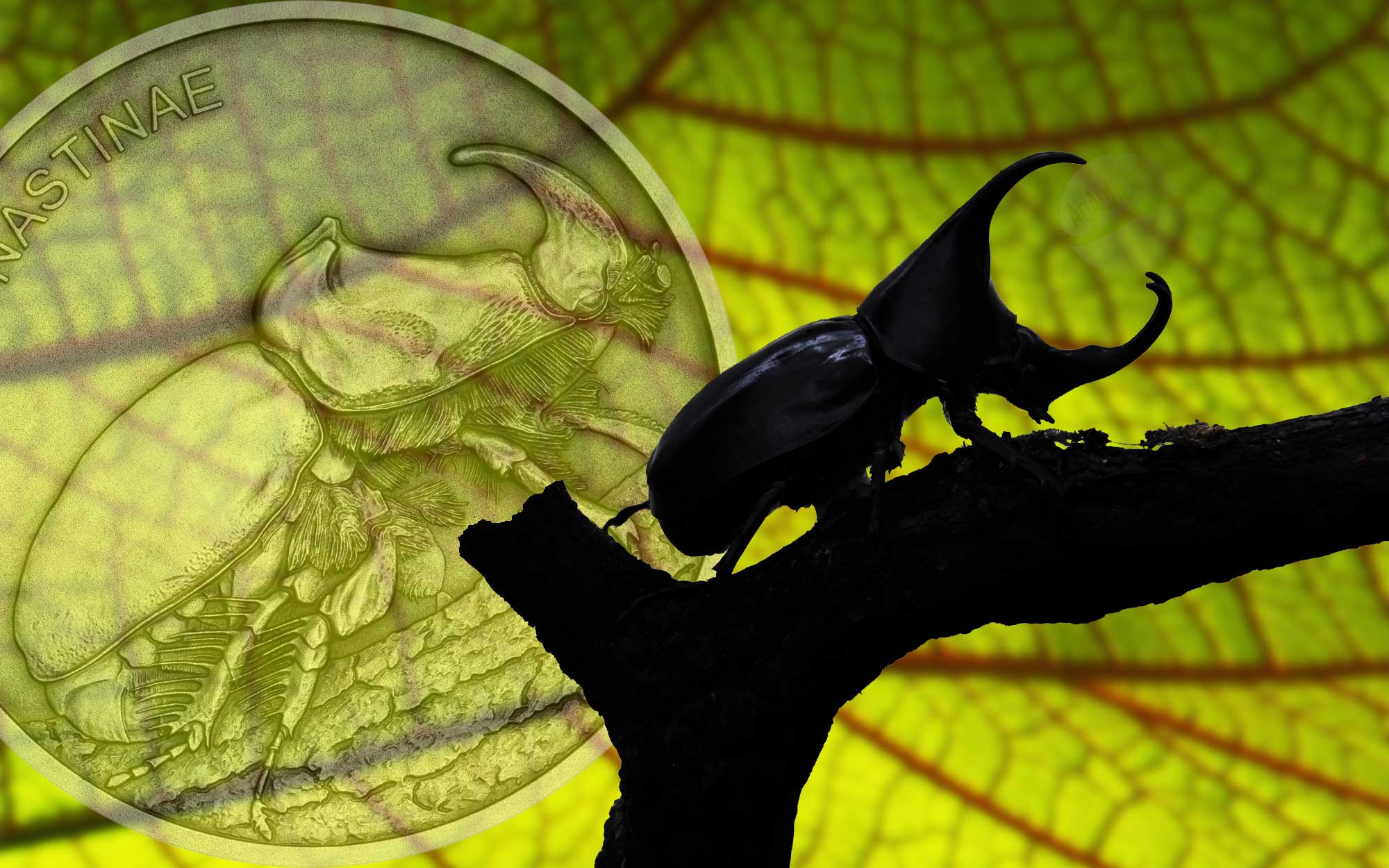

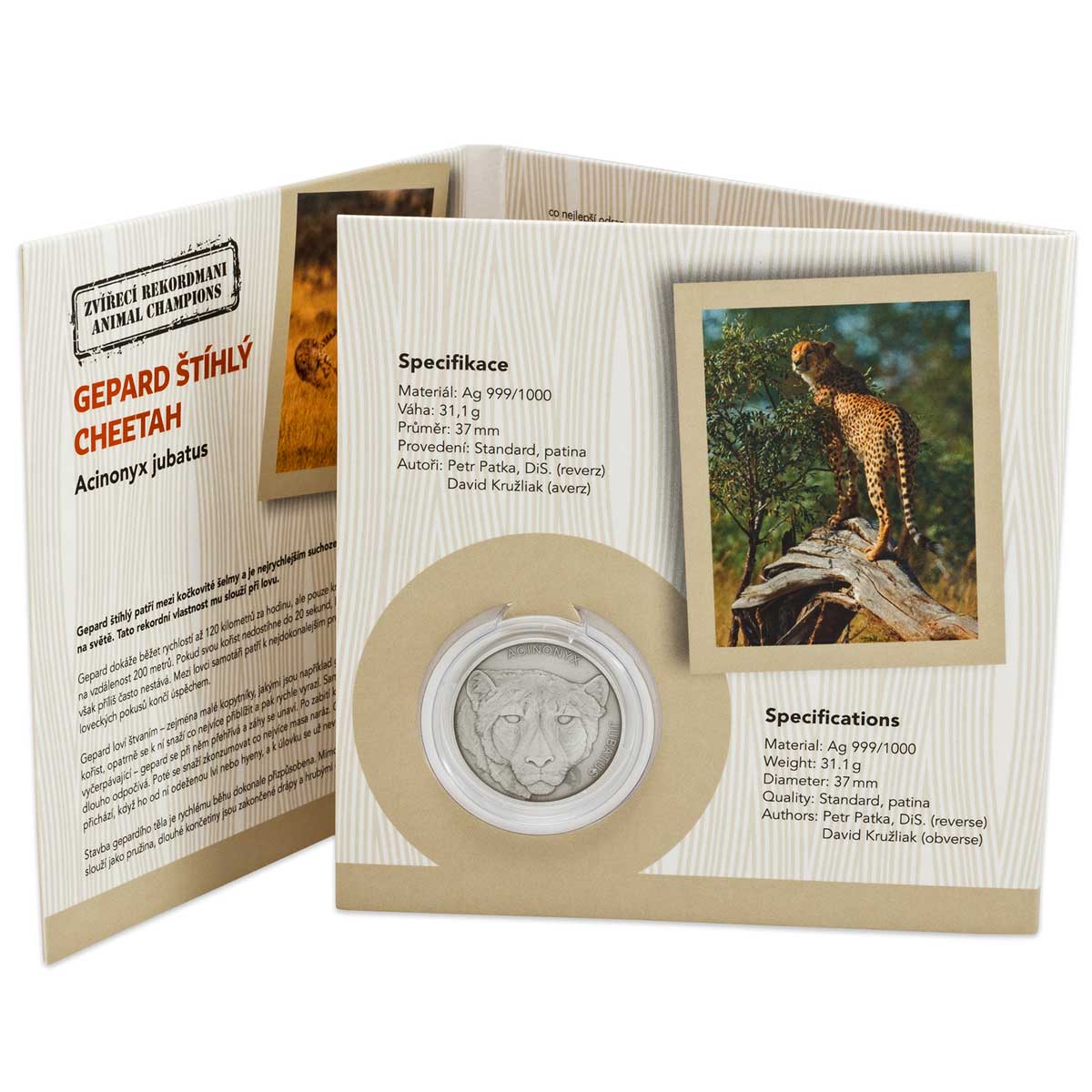
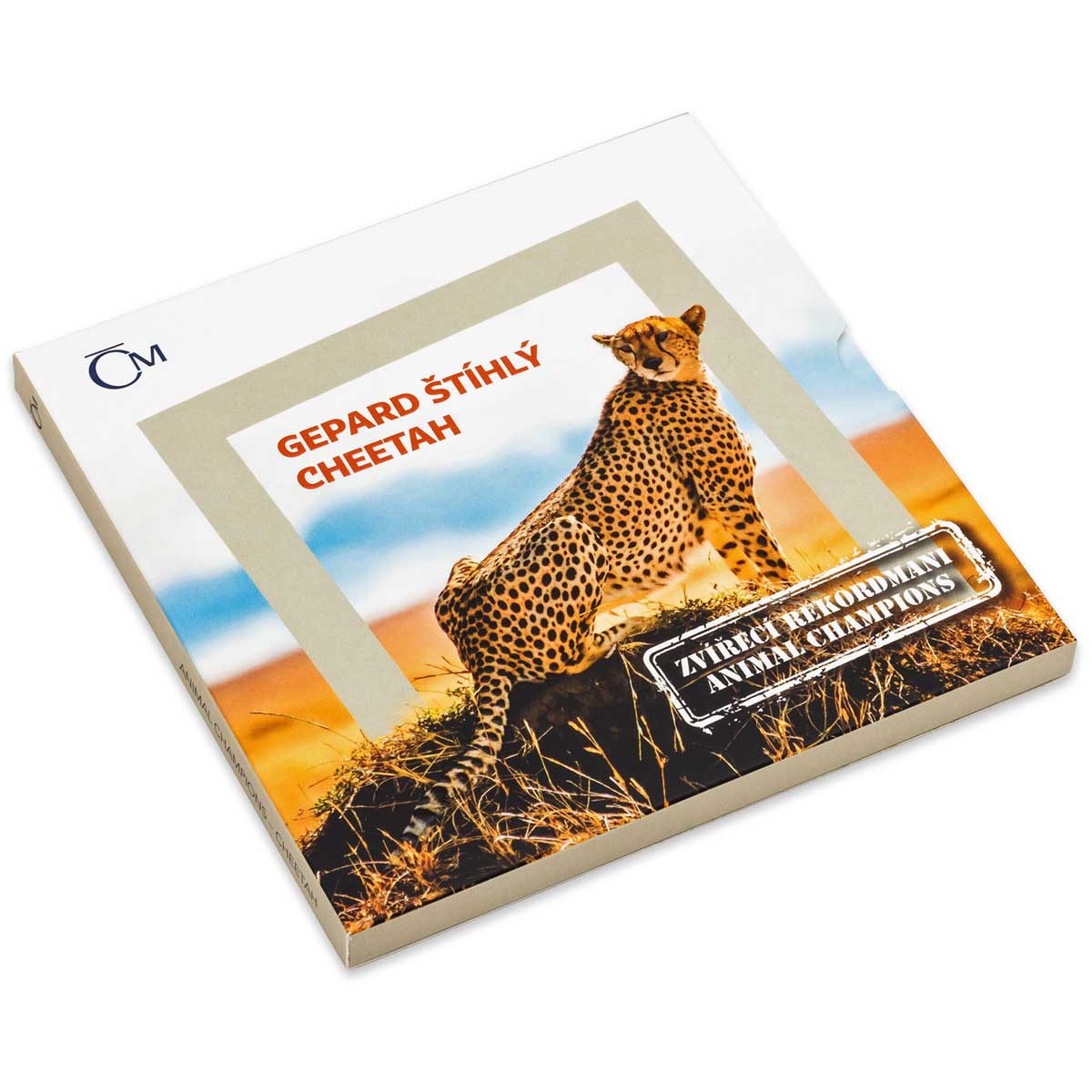

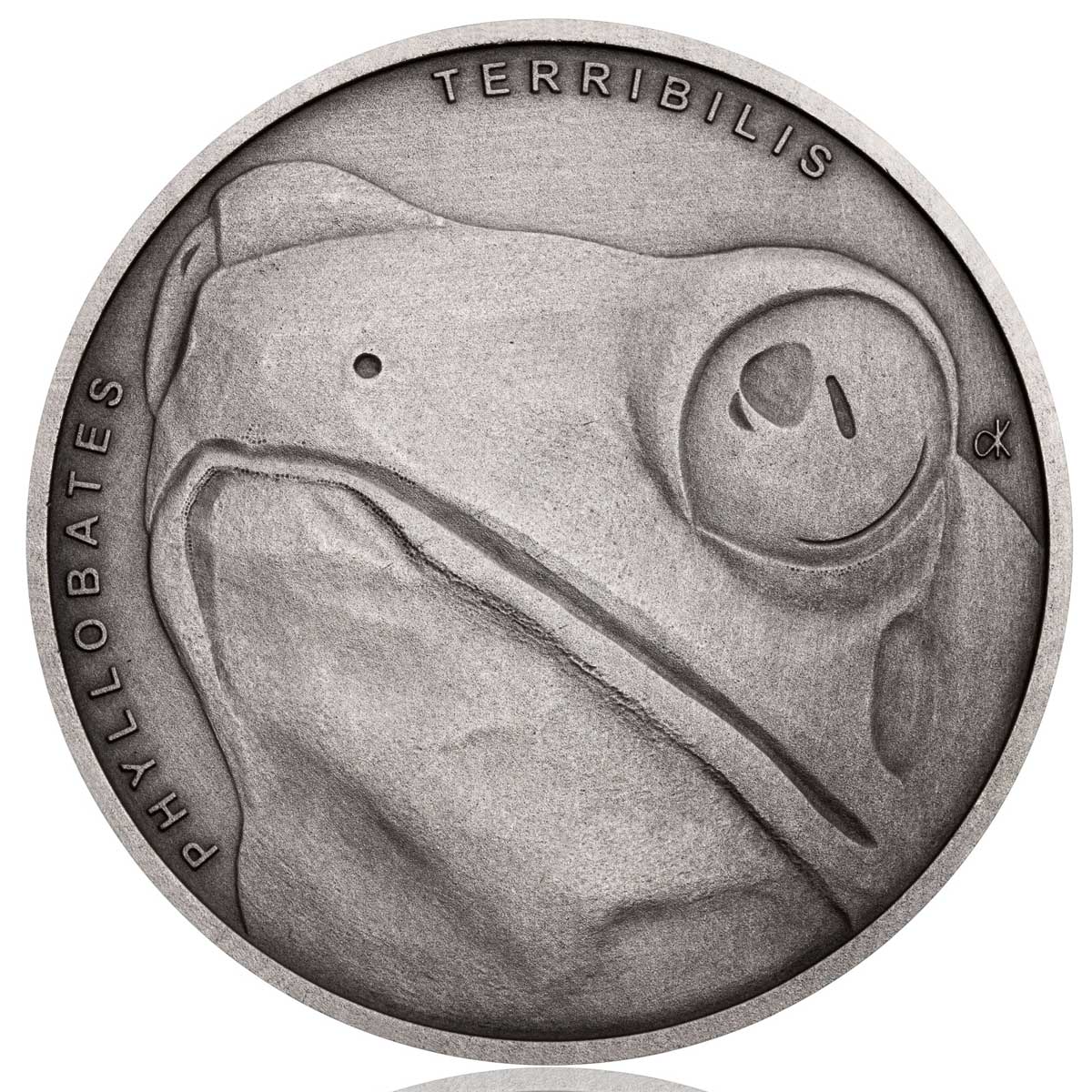

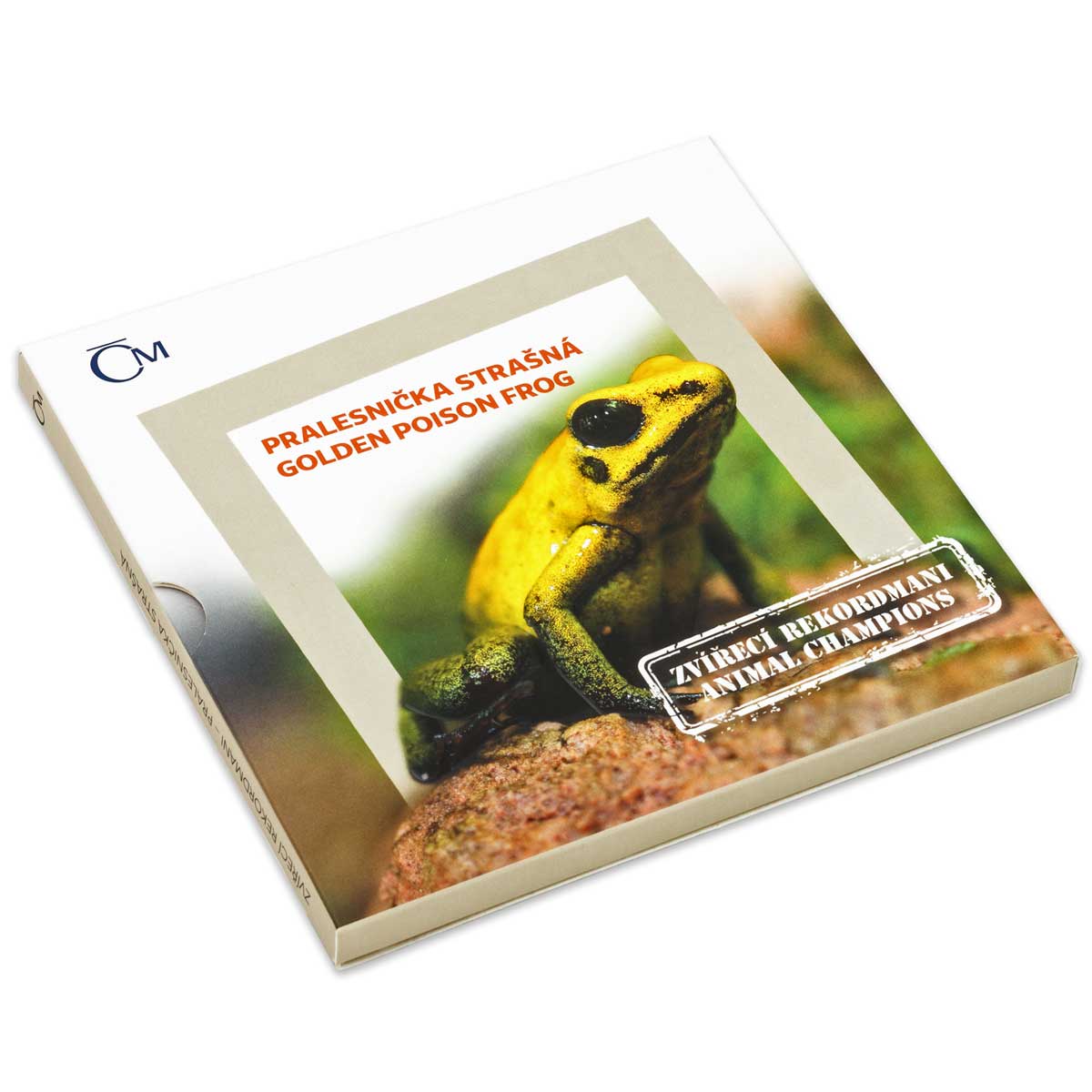
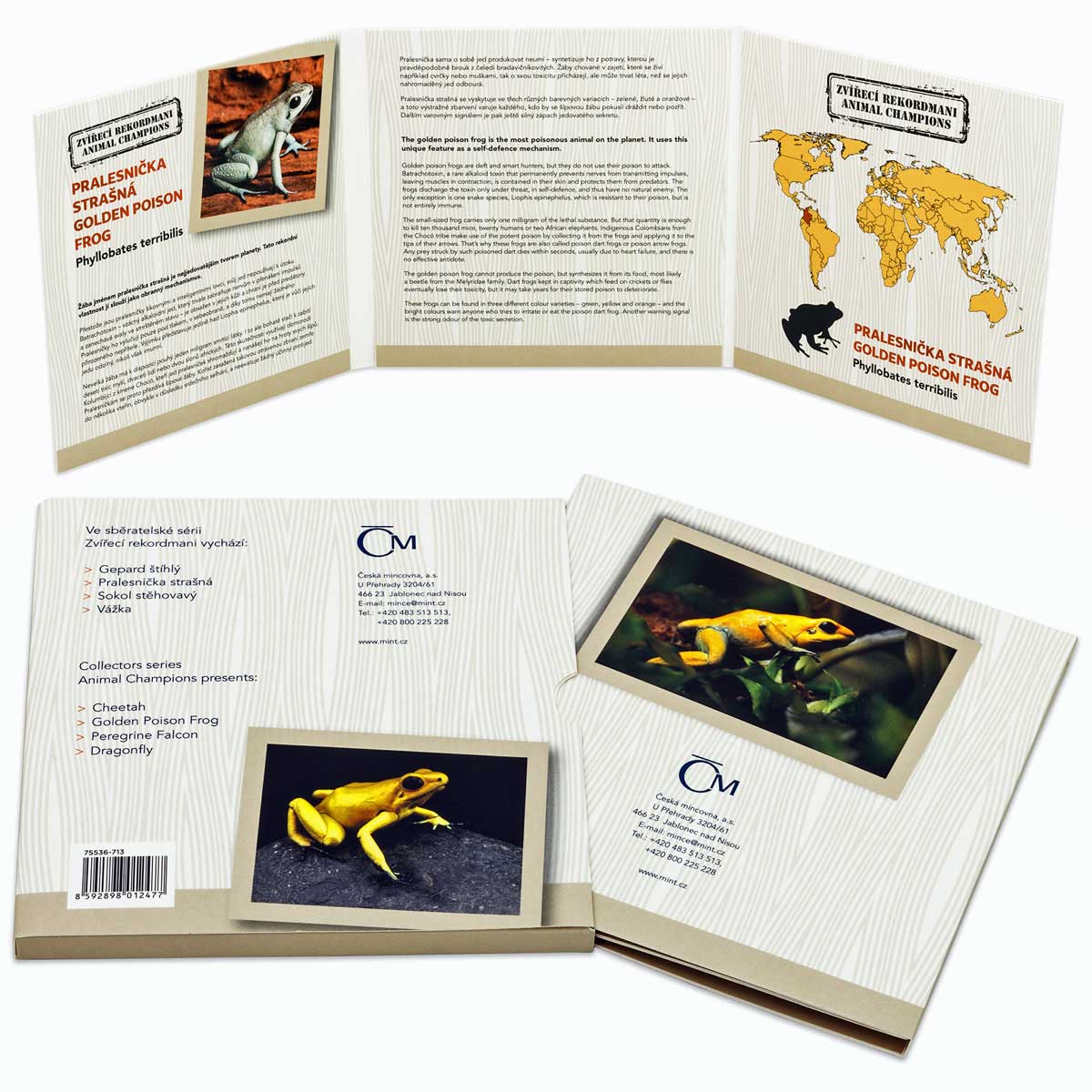
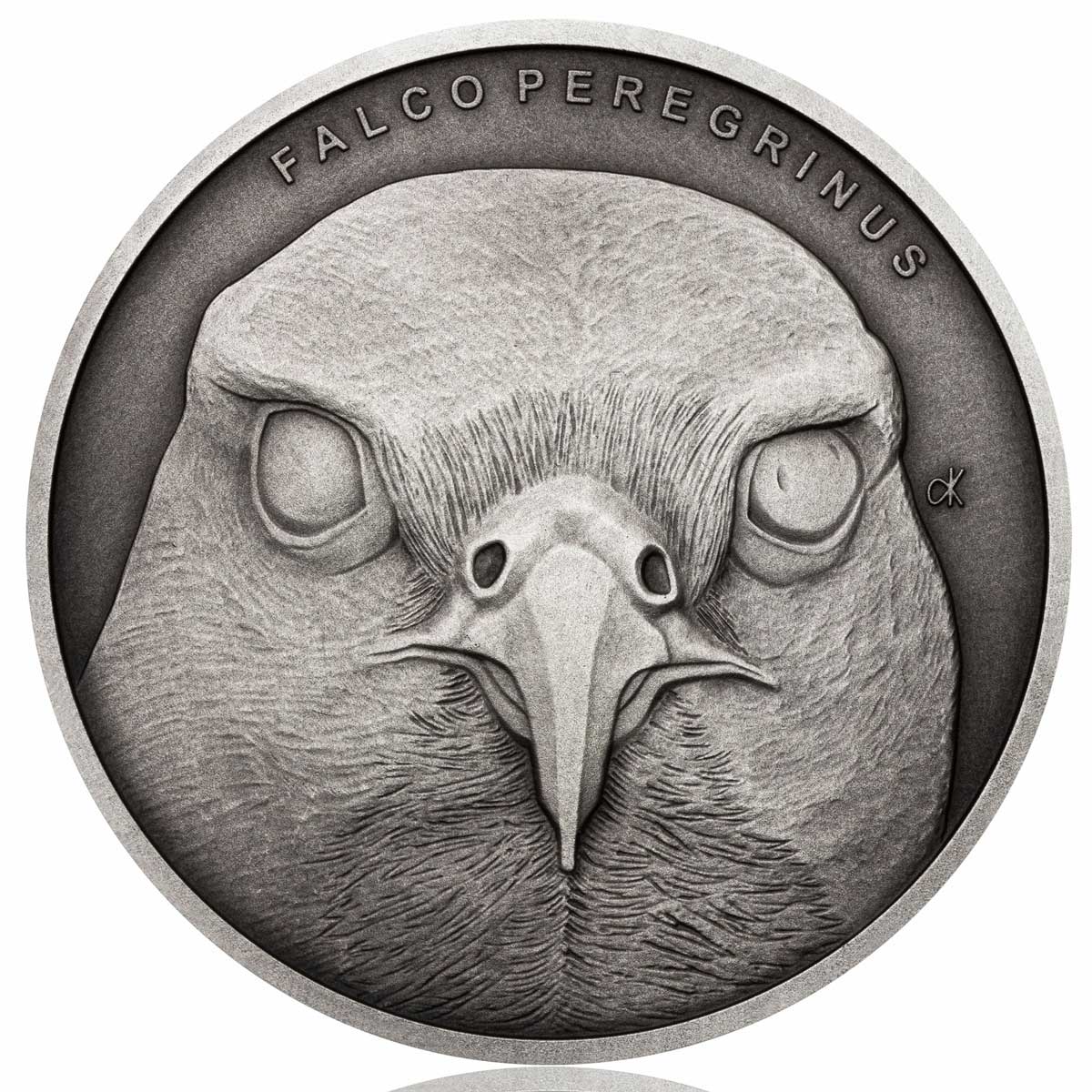



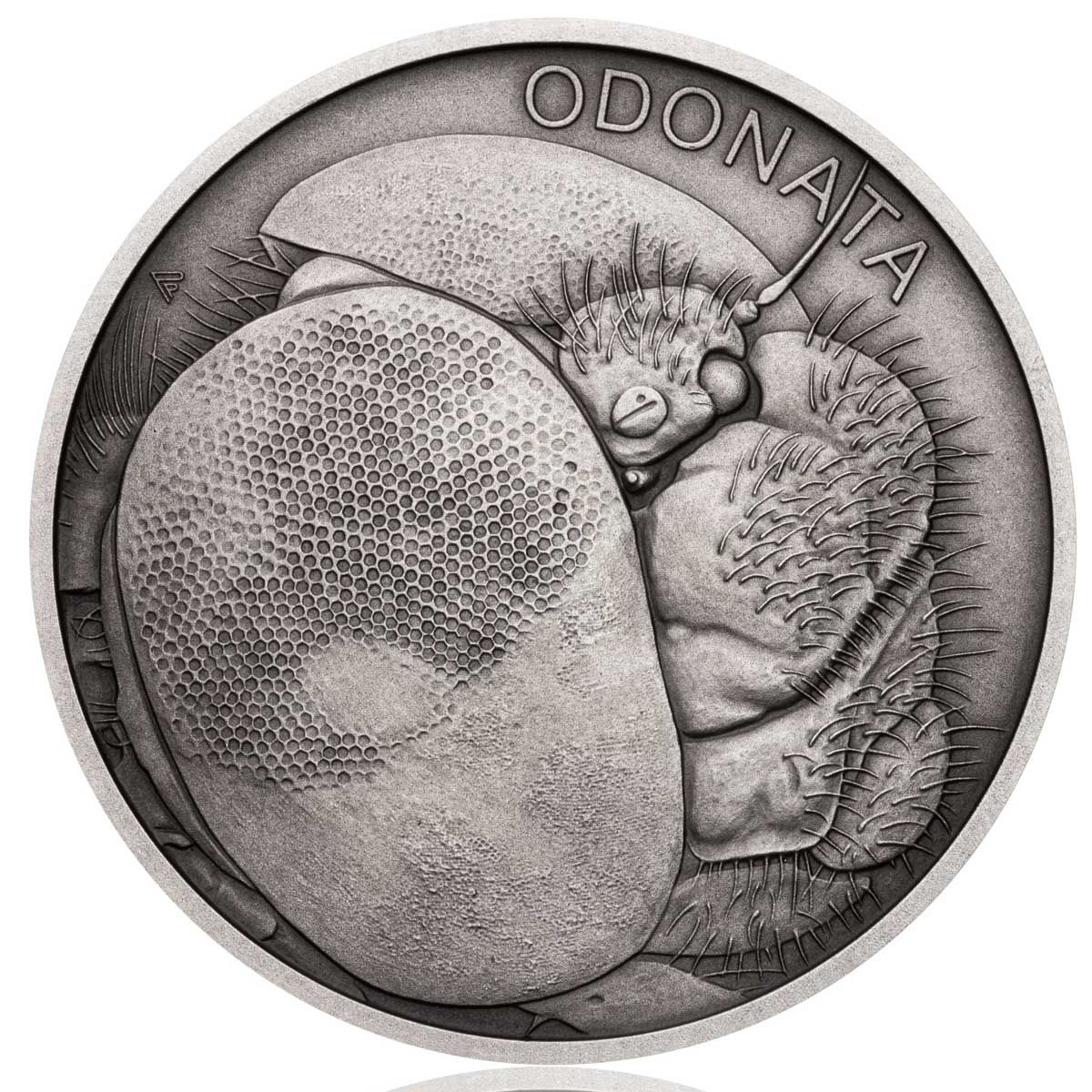
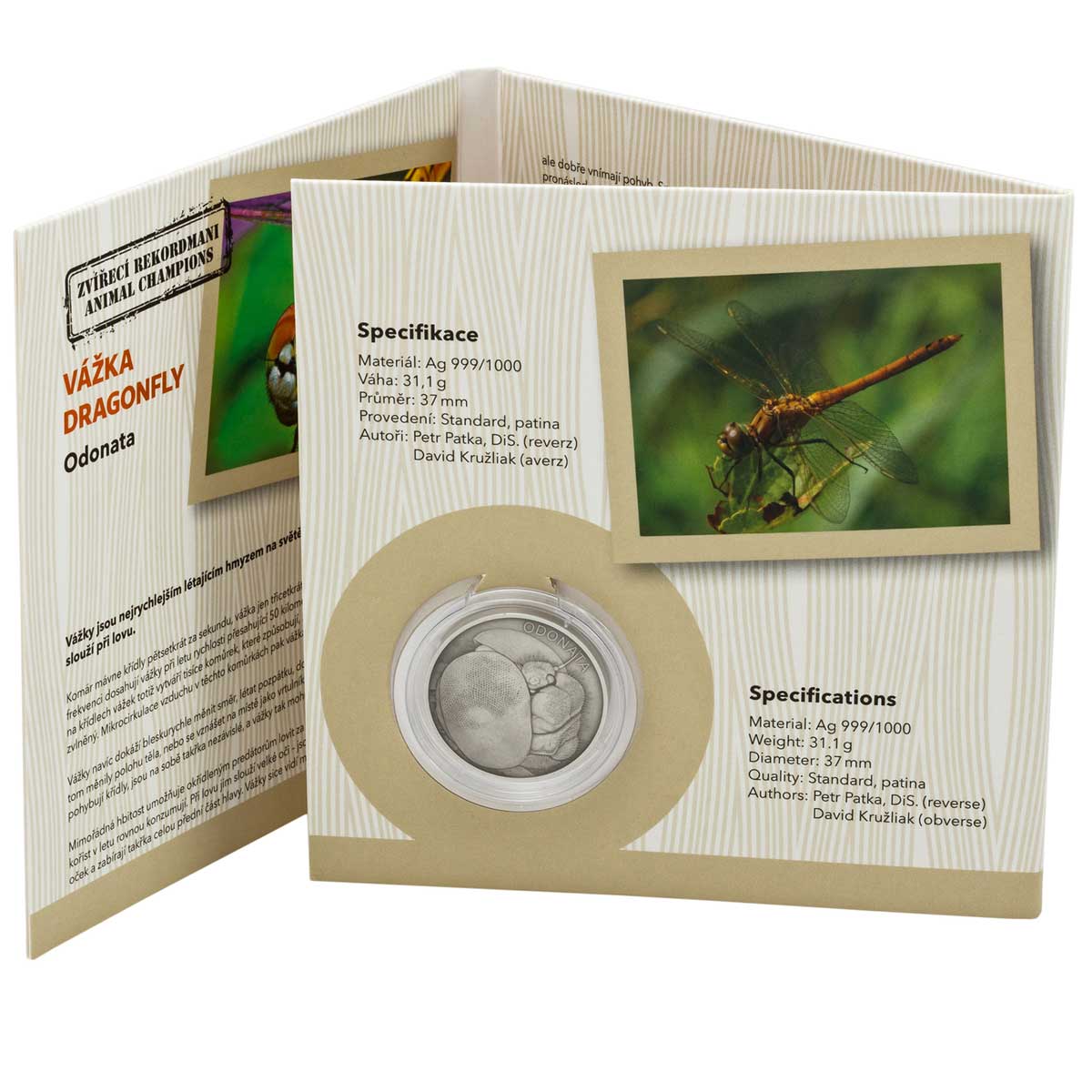
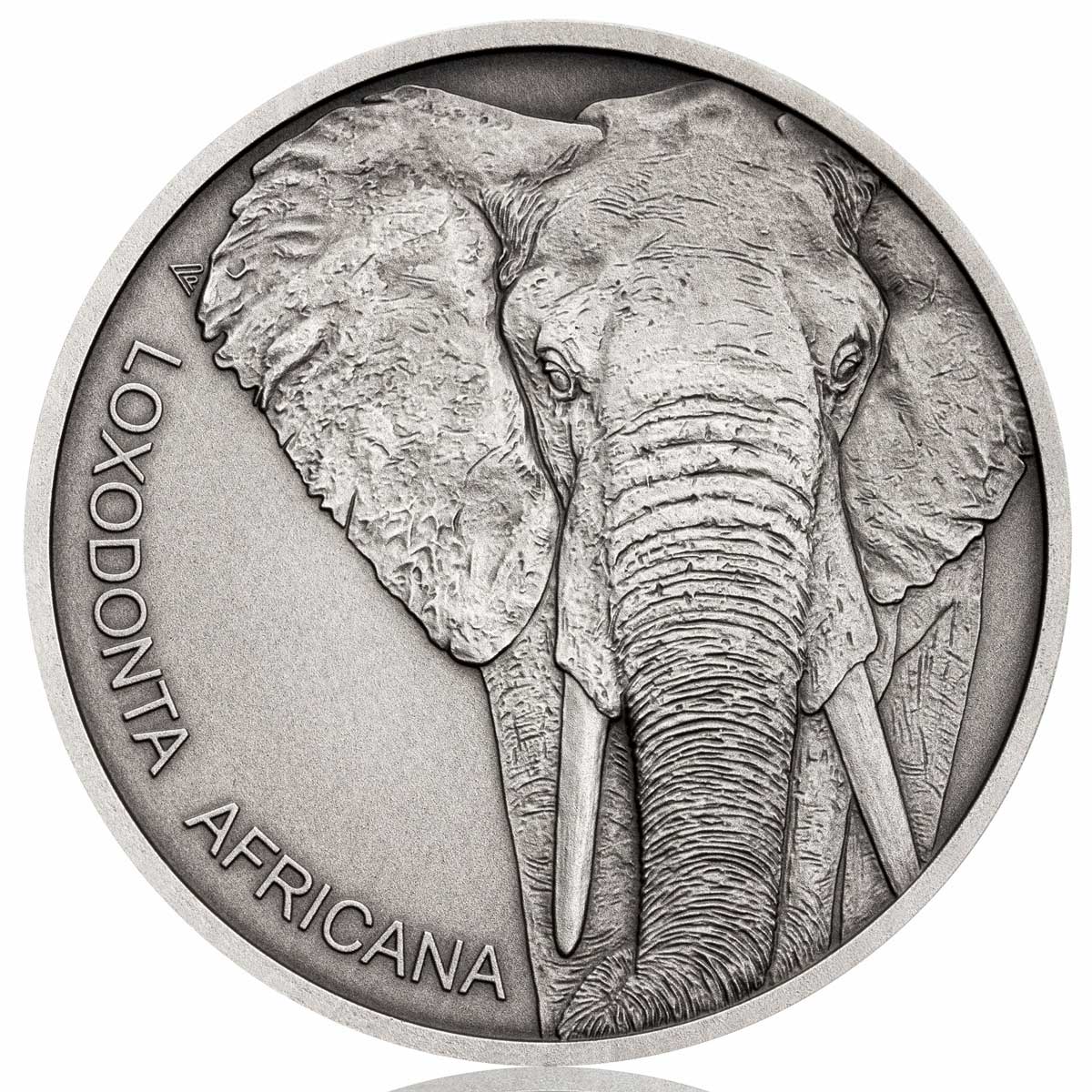
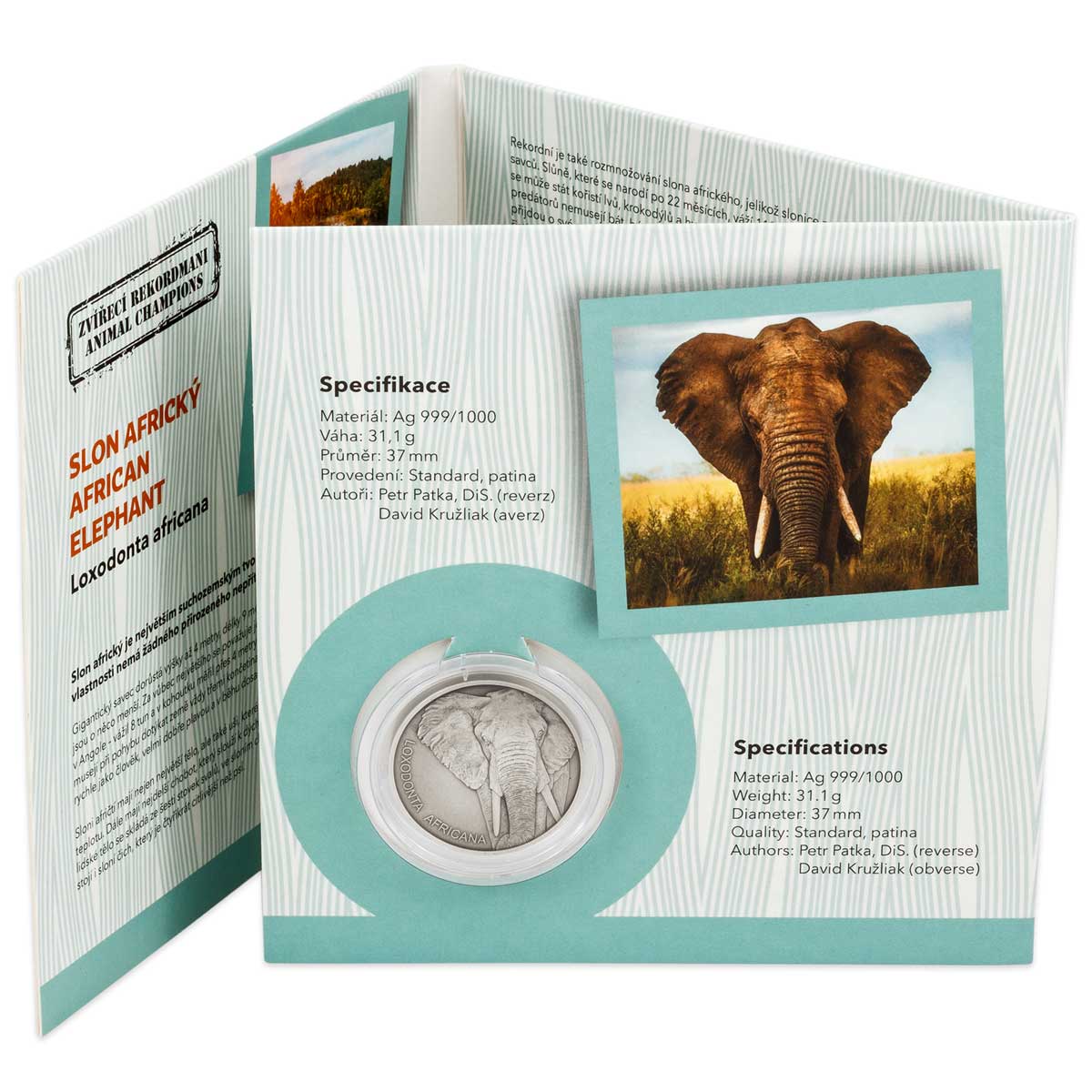
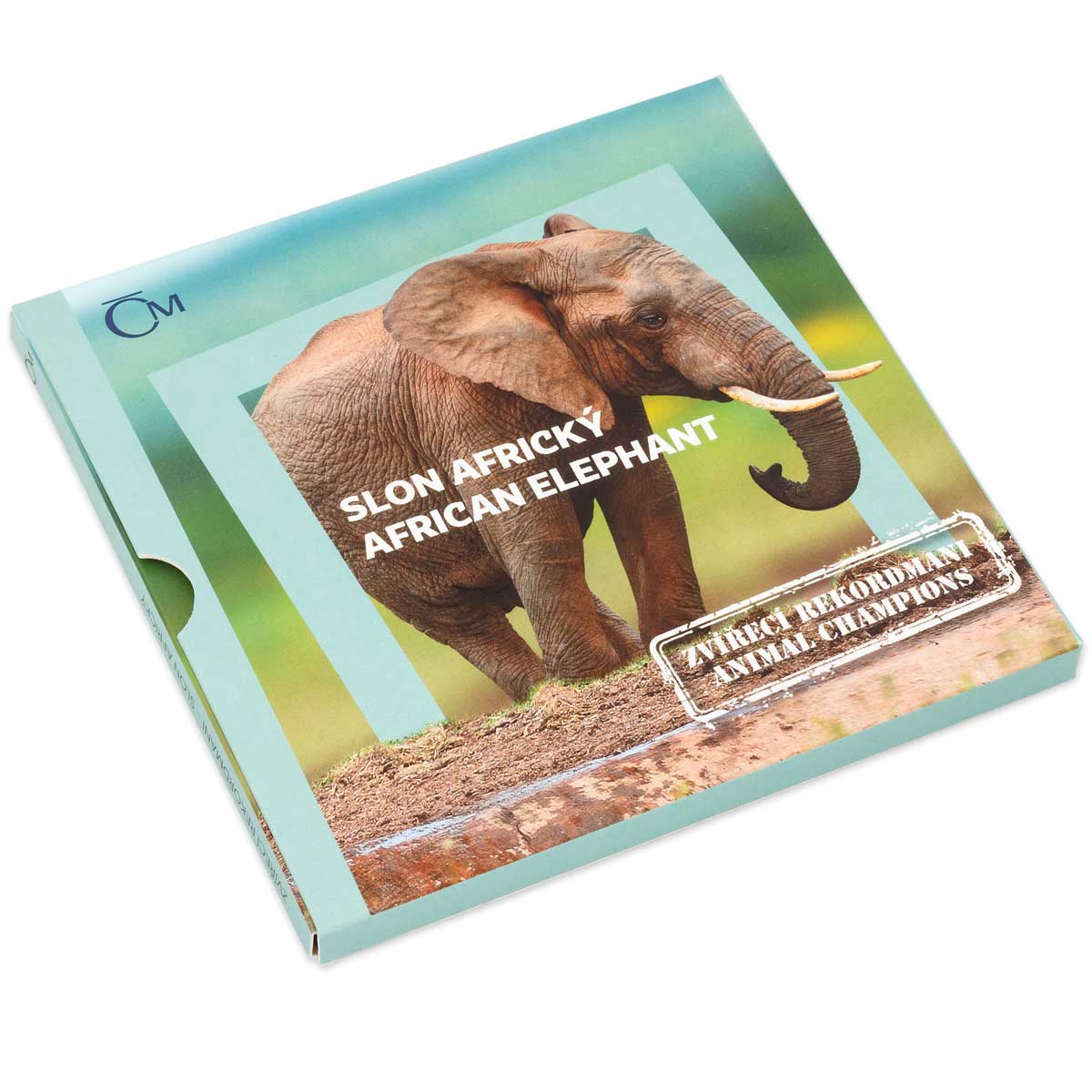


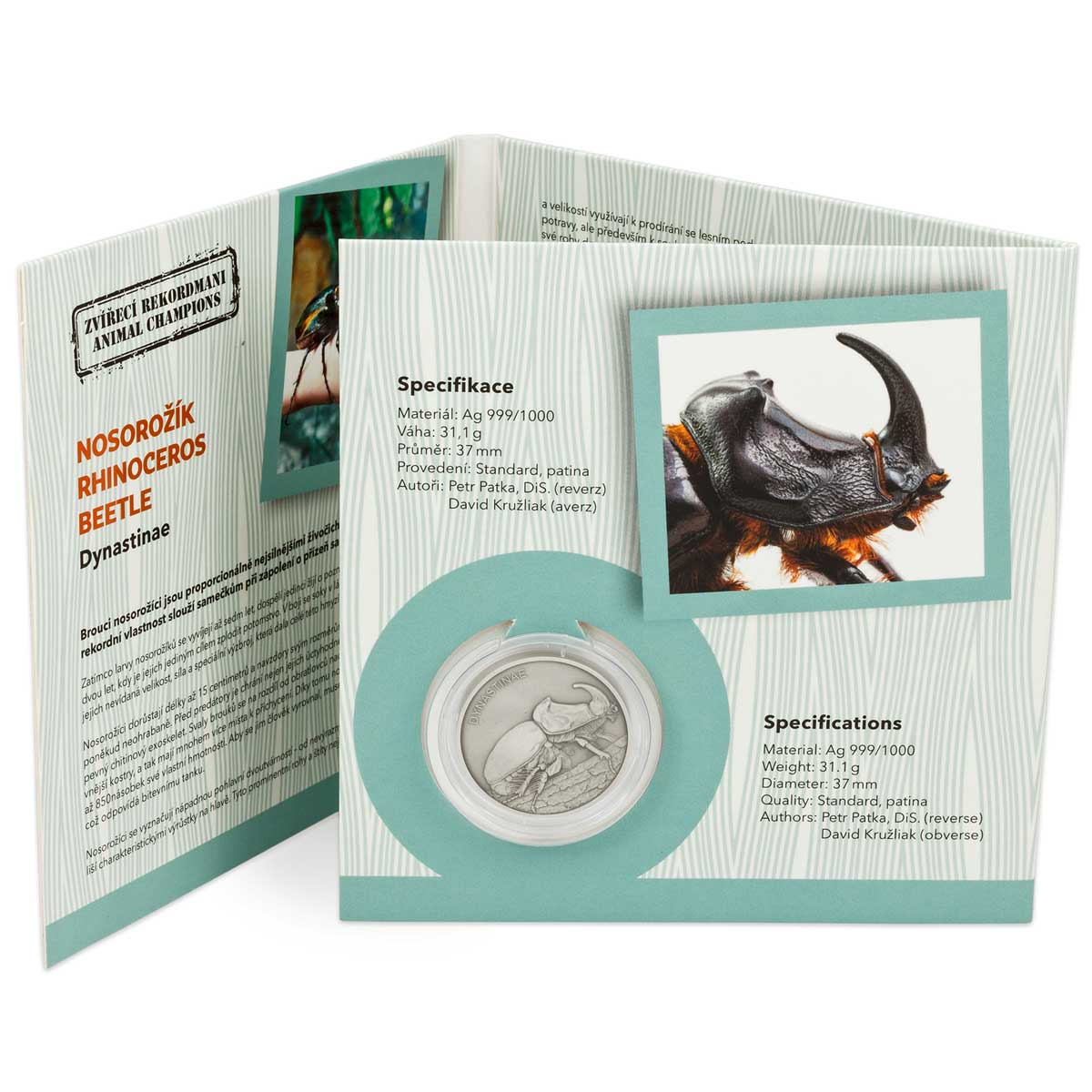
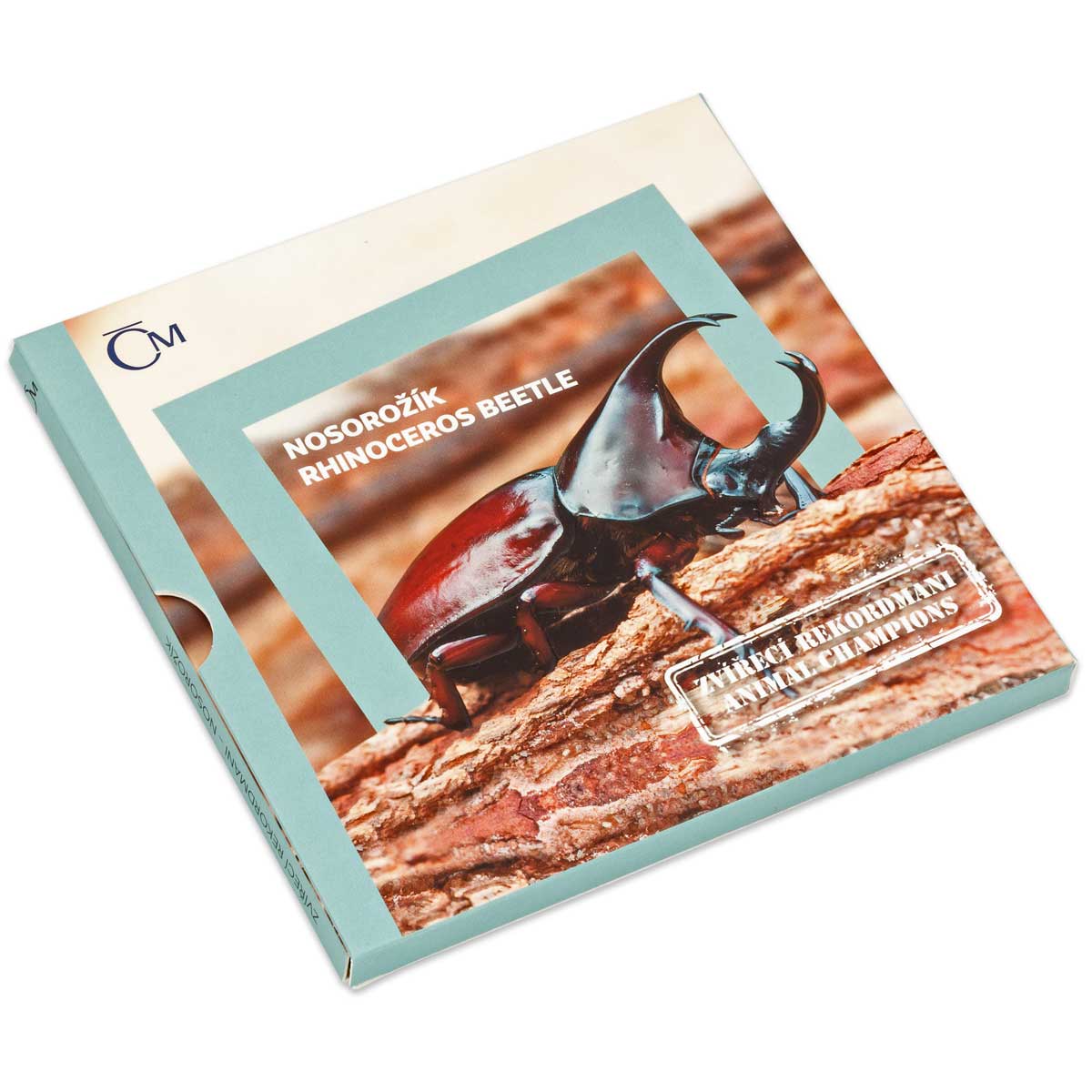
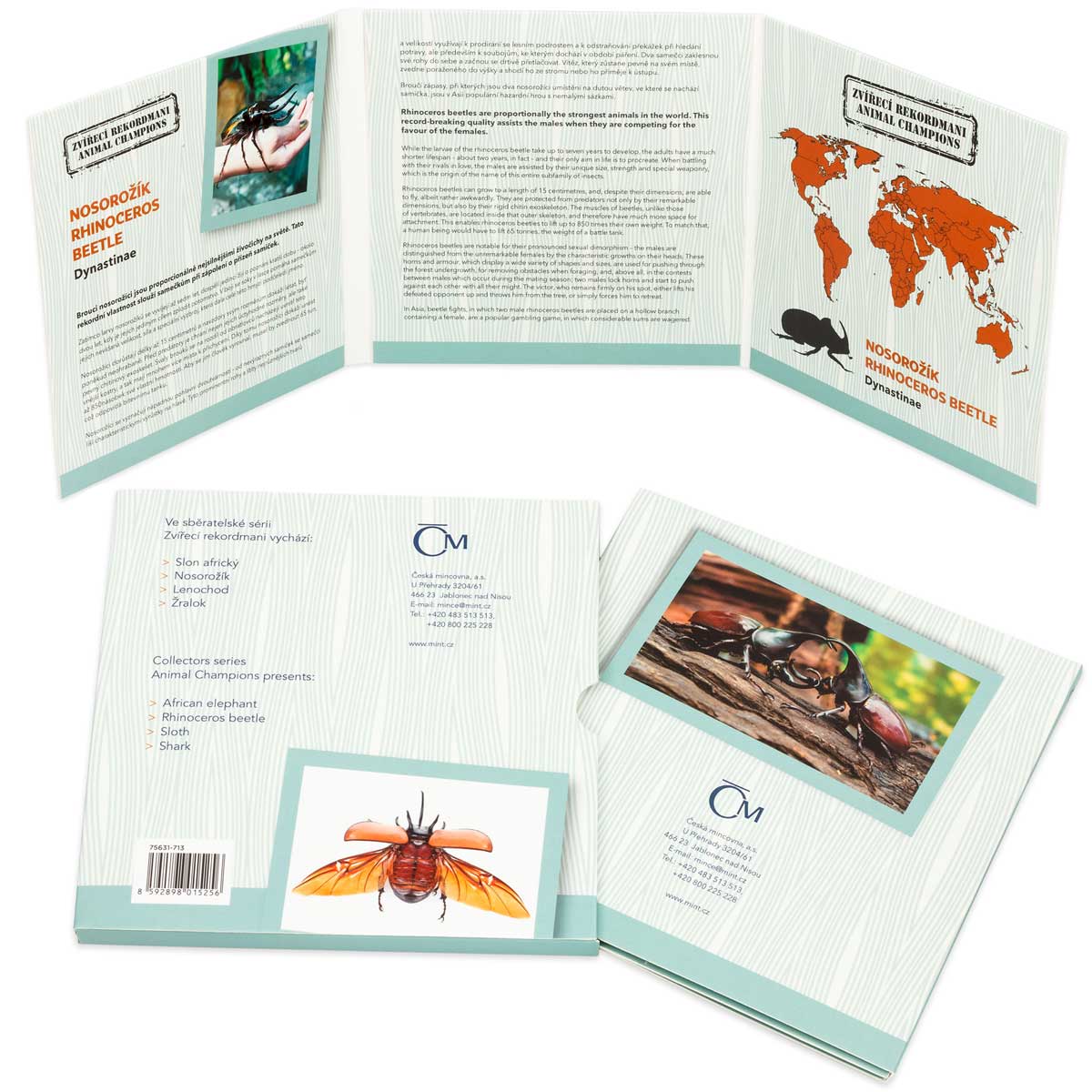




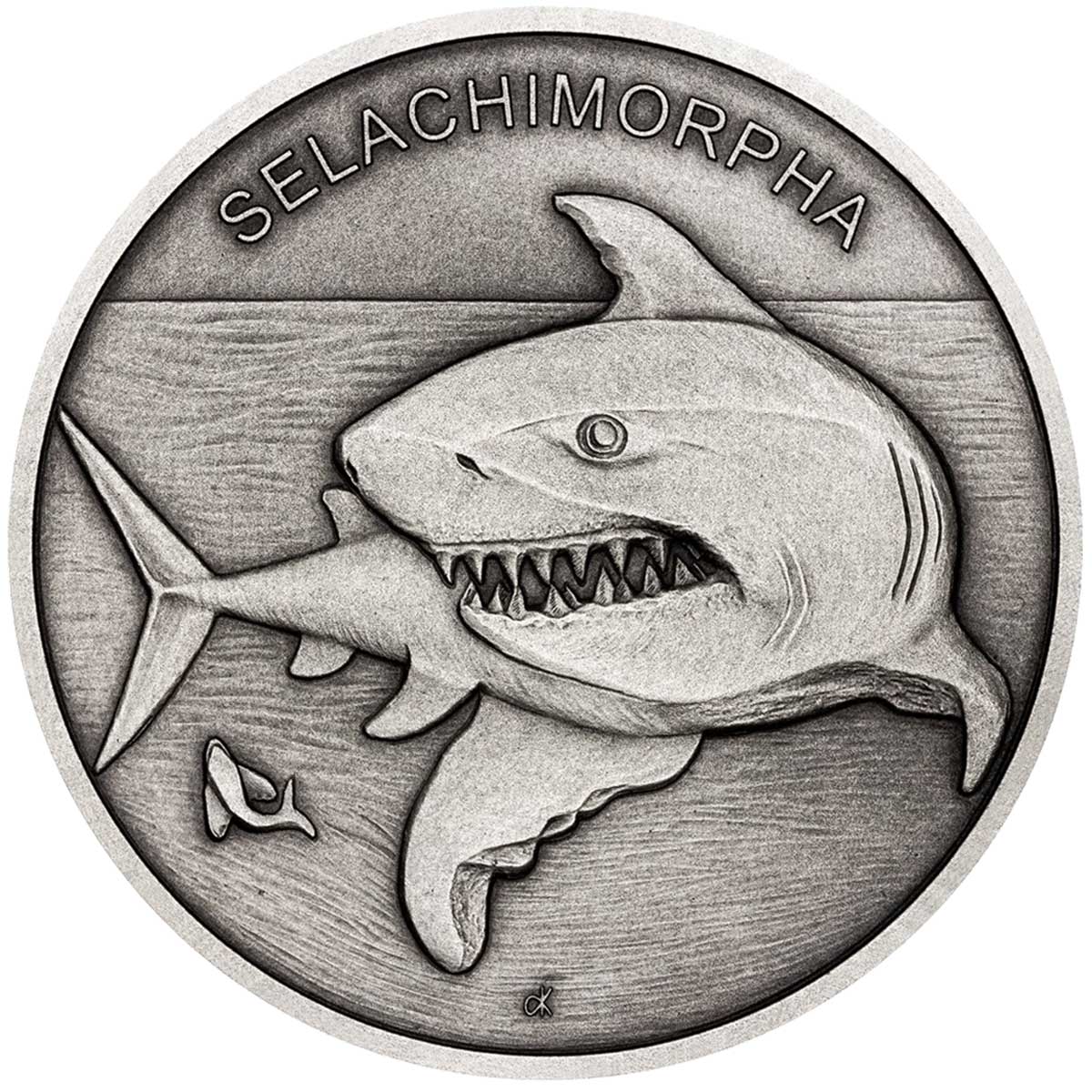
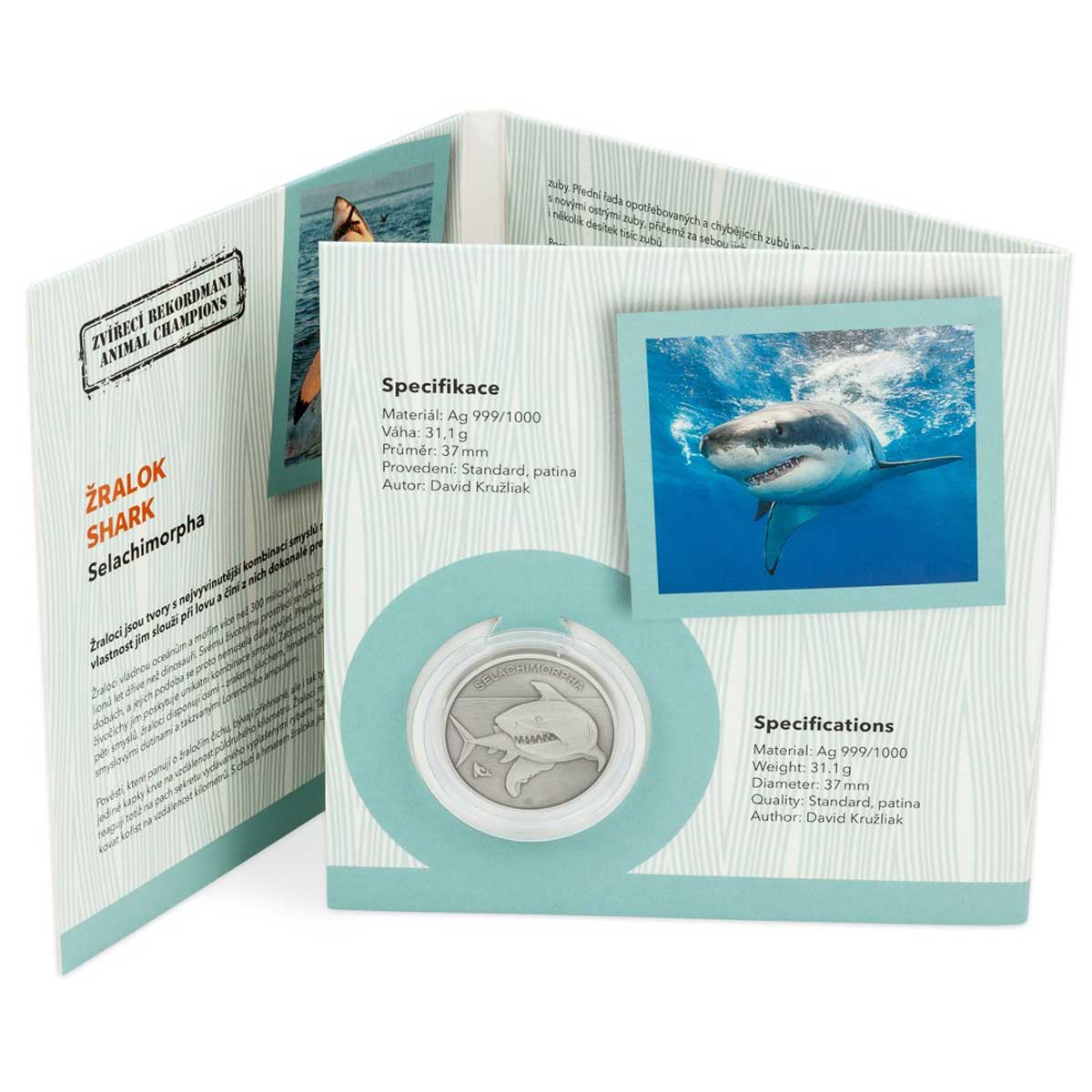
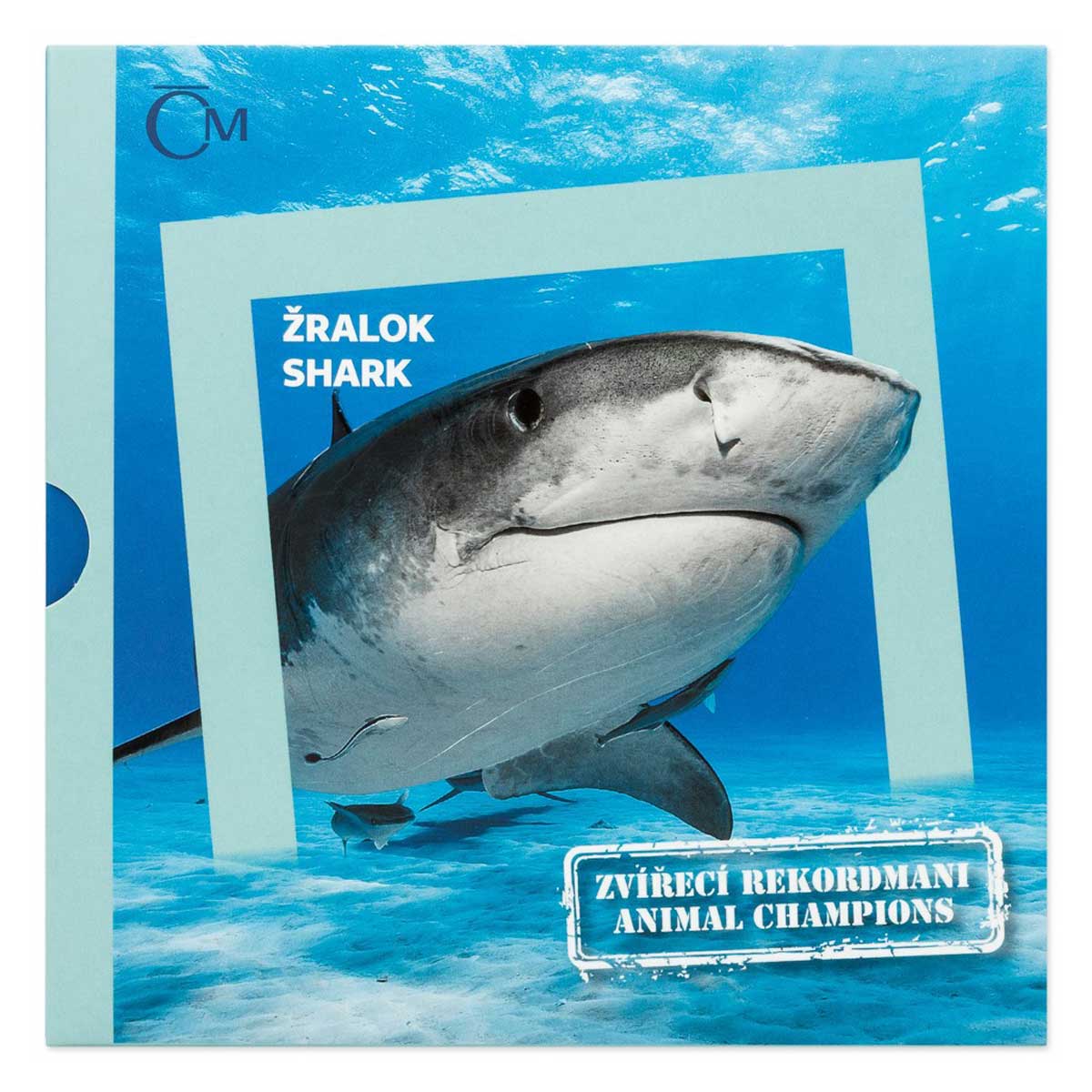

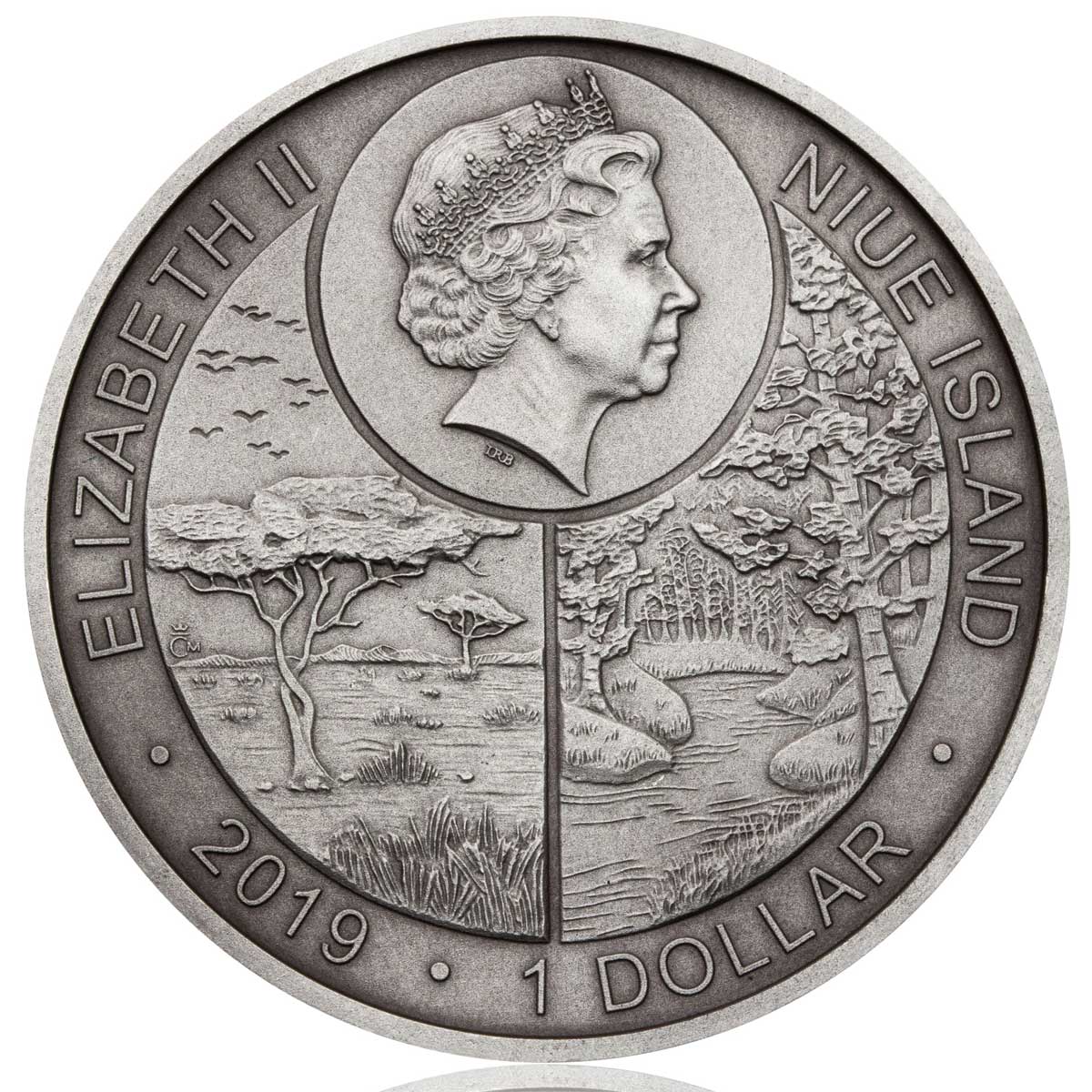
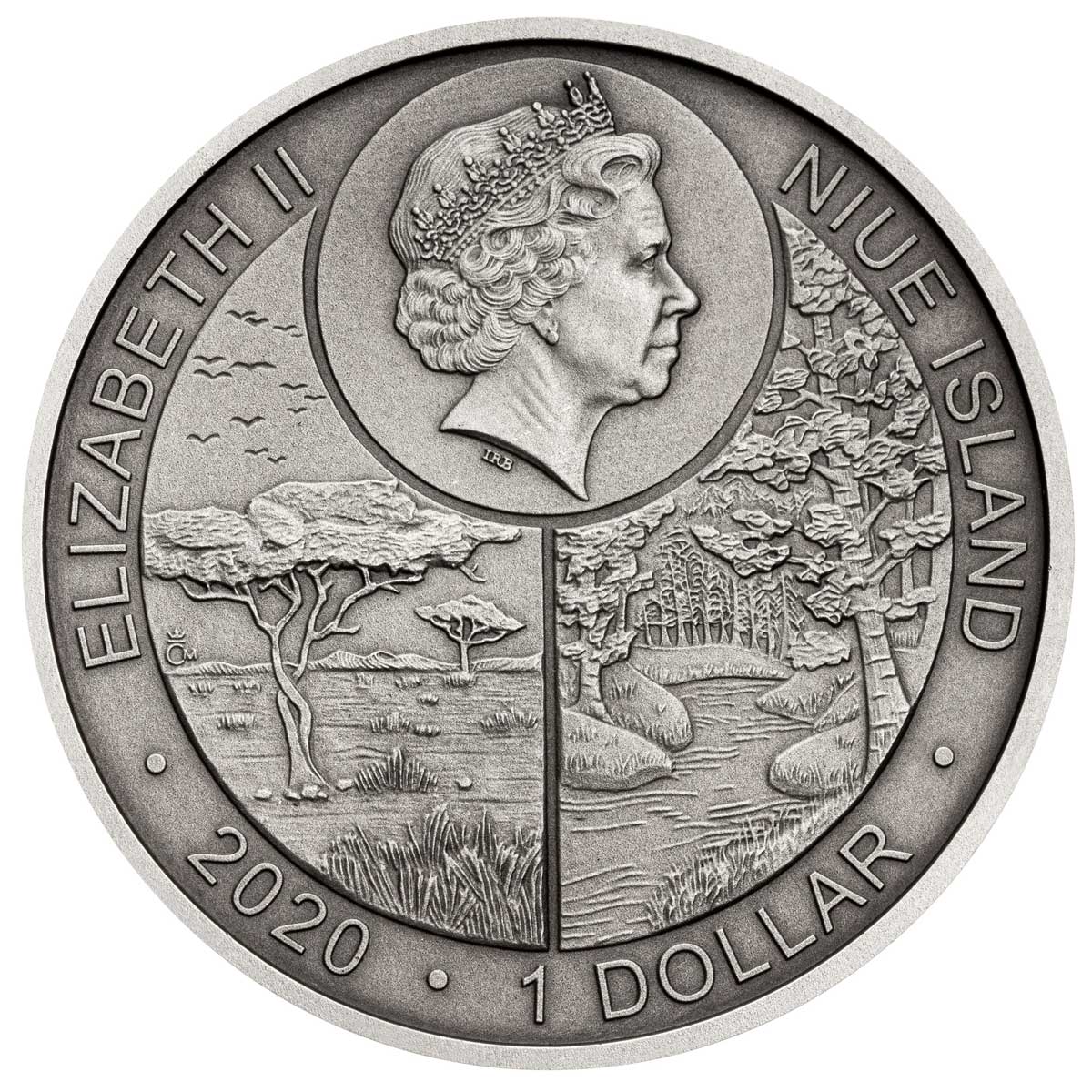
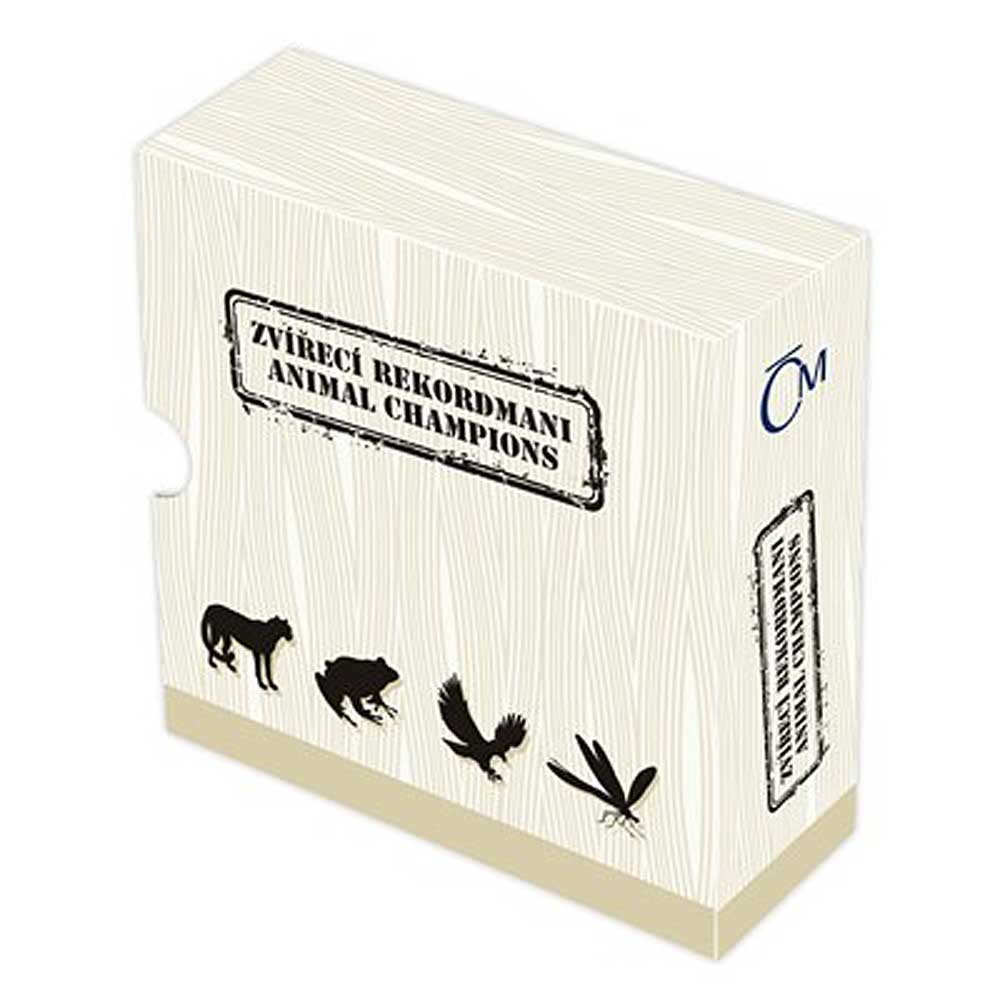

Leave A Comment